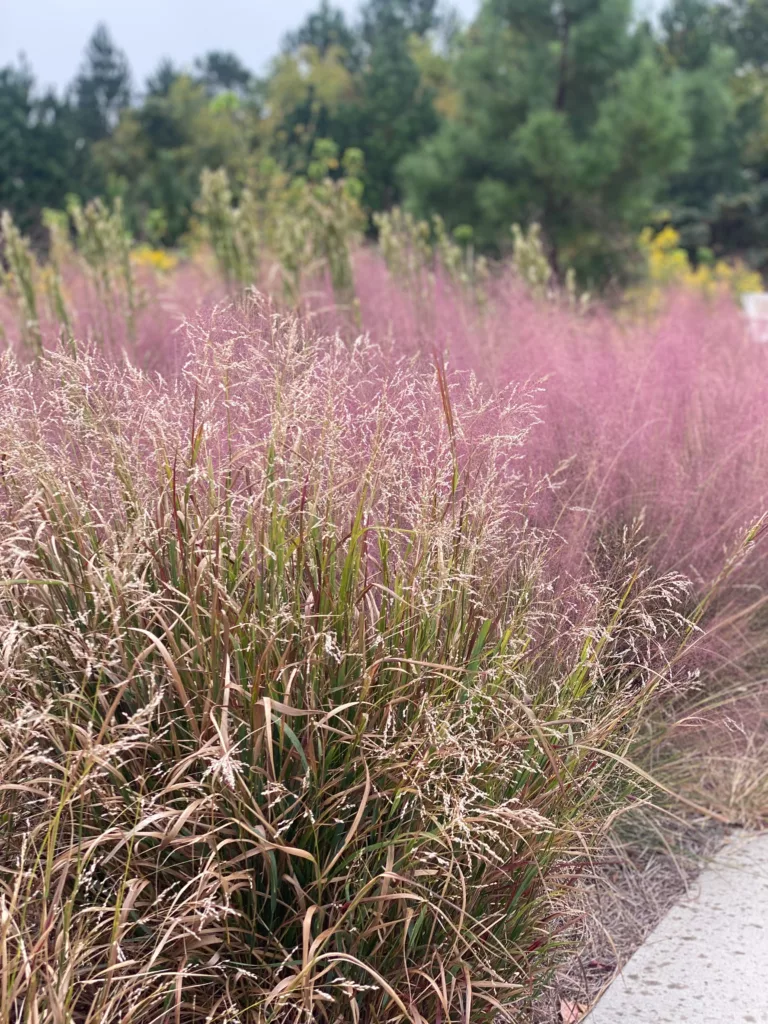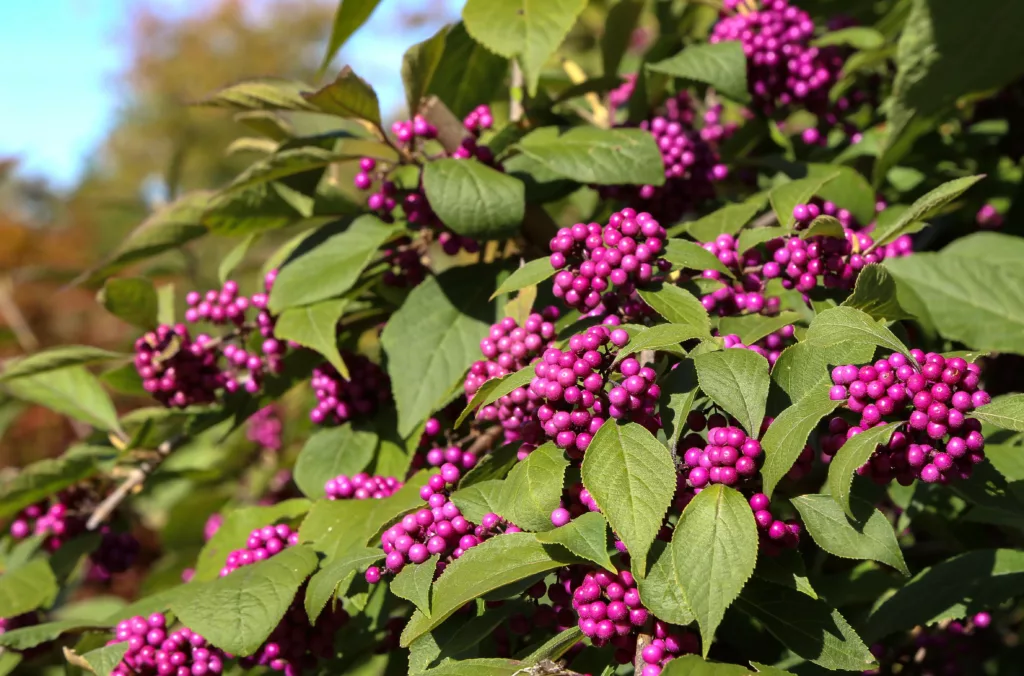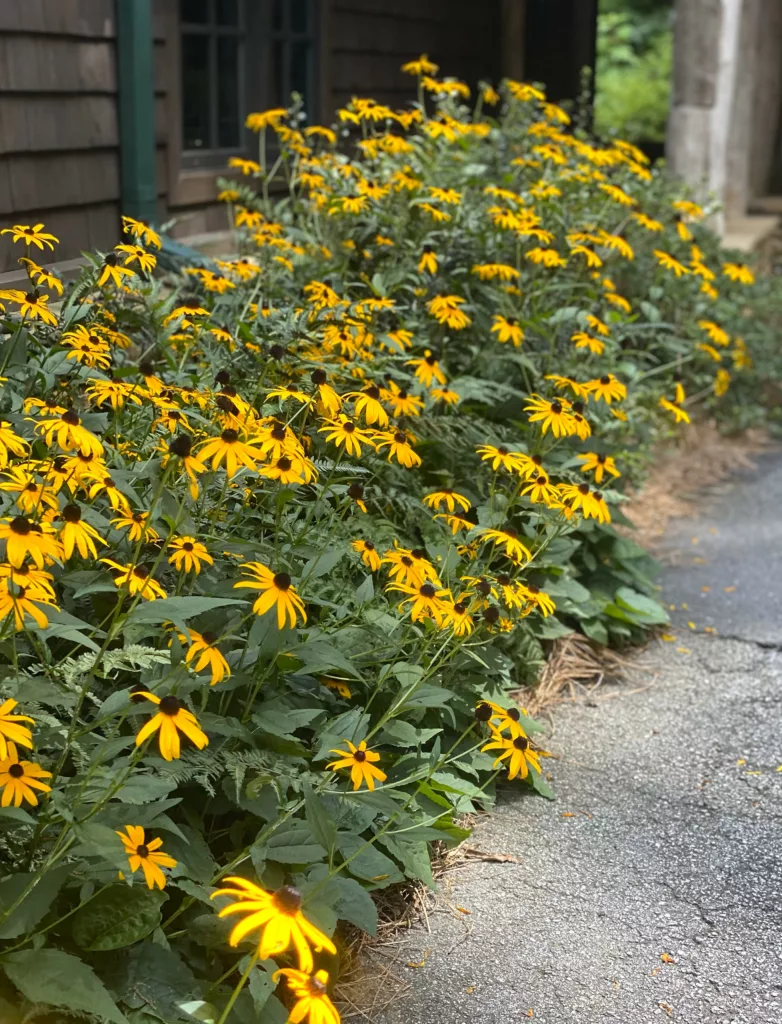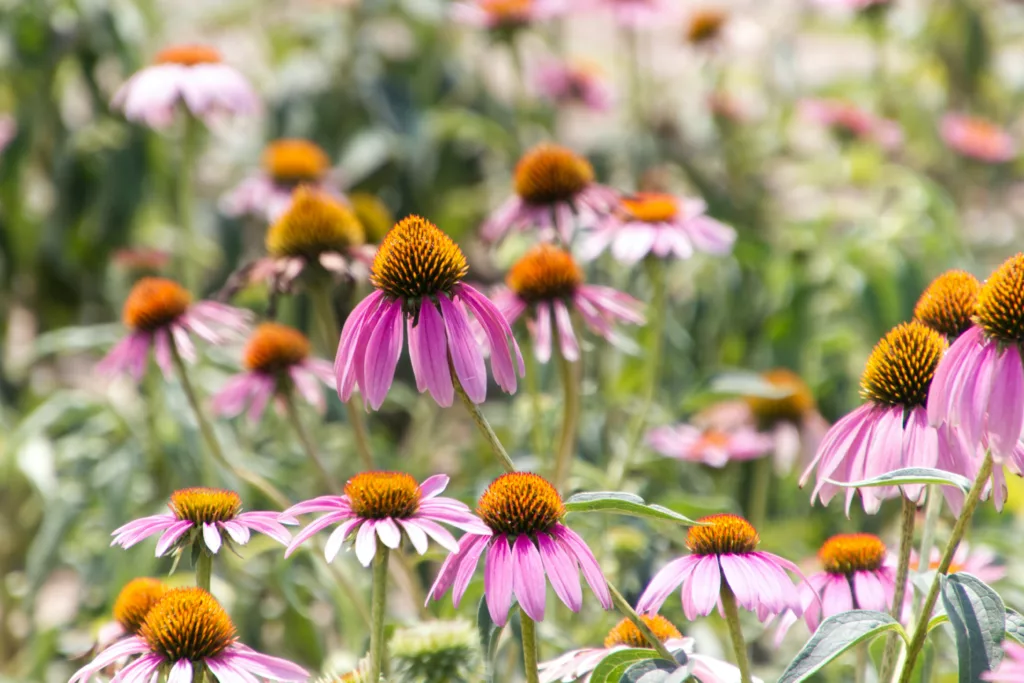Nurturing a thriving garden with native plants is a rewarding endeavor which brings nature’s beauty right to your doorstep. From vibrant wildflowers to majestic trees, the care and maintenance of native plants require a delicate balance of understanding their unique needs and ecological significance. In this guide, we share our essential tips for native plant maintenance, ensuring your garden flourishes year-round.
Knowing we are stewards of the environment, Barefoot Garden Design is committed to sustainable gardening practices. With a deep-rooted passion for preserving biodiversity, we believe in harnessing the inherent beauty and resilience of native plants to create landscapes which promote healthy ecosystems. We hope our expertise will help you to cultivate a vibrant, ecologically balanced garden which stands the test of time.
Join us as we embark on a journey to unlock the secrets of native plant maintenance, celebrating the splendor of these botanical treasures, all while fostering a sustainable ecosystem right in your own backyard!
Benefits of native plants in gardening
Native plants offer a myriad of benefits for gardening enthusiasts. Their adaptability to local environmental conditions reduces the need for excessive watering and chemical interventions. By planting native flora, gardeners can create habitats to support local wildlife, including birds, bees, and butterflies. Native plants also contribute to the preservation of regional biodiversity which maintains a balanced ecosystem.
In addition to helping out the environment, native plants often showcase stunning seasonal blooms and foliage, rivaling that of any conventional landscape plants. Their resilience to local climate variations and soil types makes them an ideal choice for low-maintenance landscaping.
Embracing native plants in gardening not only enhances the beauty of outdoor spaces but also fosters a deeper connection with the natural world. Incorporating native flora into our gardens creates a commitment to preserving the environment for future generations.

Native plant selection and planning
The foundation of a successful native plant garden is thoughtful selection and strategic planning. Before creating a native garden, take the time to research native plant species which thrive in your specific region. It’s also important to consider factors specific to your landscape, such as sunlight exposure, soil type, and water availability.
When selecting native plants, prioritize species that are well-suited to the local climate and require minimal intervention to thrive. Aim to create a diverse ecosystem by incorporating a variety of native plant species offering different bloom periods, foliage textures, and wildlife-attracting attributes.
(Pssst!! Check out or recommendations for native plants based on your USDA Zone 1-4, 5, 6, 7, 8, 9-10)
Incorporating native plants into your garden design supports local ecology and contributes to the preservation of indigenous plant species. By consciously selecting and planning for native plants, gardeners can play a vital role in conserving the natural heritage of their region while creating stunning, sustainable landscapes.
Soil and watering requirements for native plants
Understanding the soil and watering requirements of native plants is essential for their maintenance. Native plant species have evolved to adapt to specific soil conditions and seasonal precipitation patterns, making them well-suited for sustainable landscaping. Use native soil mixed with compost to create an optimal growing environment for new plants.
When it comes to watering native plants, avoid overwatering, as many native plant species are adapted to local precipitation levels and can thrive with minimal supplemental watering once established. Implementing mulching techniques can help conserve soil moisture and regulate temperature, helping to minimize native plant maintenance requirements.

Pruning and trimming native plants
Proper pruning and trimming plays a crucial role in the maintenance of any garden. Regular pruning helps shape plants, encourages strong branching structures, and removes any damaged or diseased foliage. When engaging in pruning activities, it’s important to adhere to species-specific guidelines, as different native plants may have varying growth habits and pruning requirements.
Though few native plants typically require pruning, timing is key when it comes to pruning. Be sure to identify the ideal pruning windows for different plant varieties. Proper pruning practices can help mitigate the risk of pest infestations and diseases, contributing to the long-term vitality of the garden.
Dealing with pests and diseases in native plant gardens
While native plants are often more resistant to local pests and diseases than exotic species, it’s essential to monitor garden health and promptly address any issues which arise. Implementing integrated pest management strategies can help minimize the use of chemical interventions (while also protecting your soil health).
A proactive approach to pest and disease management includes regular garden inspections, proper sanitation practices (removing dead and diseased plants), and the use of natural pest deterrents. A balanced ecosystem is the best way to encourage the presence of beneficial insects and wildlife which naturally control pests.
In the event of pest or disease outbreaks, consider targeted, eco-friendly remedies to address the issue while minimizing impact on beneficial organisms and overall garden health. By prioritizing preventive measures and sustainable pest management techniques, native plant maintenance can be easy while nurturing thriving, biodiverse landscapes.

Seasonal maintenance for native plants
Each season changes our gardens, and the way we respond to their needs. Understanding seasonal growth patterns can help reduce the overall required maintenance routines.
For most native plants, spring means new growth, making it the best time for fertilizing and dividing plants (if necessary). As summer temperatures creep up, keep an eye on the forecast and supplement watering for established native plants if rainfall is less than once a week.
Fall is the best time for pruning (if necessary), seed collection, and preparing native plants for the winter ahead. This can mean simply mulching a bed to protect roots from winter freezes, or cutting the plant back. These will vary by plant, so be sure to do research on what’s in your garden!
Creating a seasonal approach to native plant maintenance really does help reduce the amount of effort maintenance takes.
Creating a wildlife-friendly environment with native plants
Native plants create welcoming habitat for a diverse array of wildlife, from pollinators to songbirds. By providing food sources, shelter, and nesting sites for local wildlife, it creates ecological balance in the landscape. Attracting and supporting beneficial insects, birds, and small mammals helps reduce predatory pests and diseases.
Wildlife-friendly and native plant gardens prioritize species offering nectar, pollen, and edible seeds to support pollinators and birds throughout every season. The greater the variety of flowering shrubs, trees, and perennials the greater diversity of wildlife species the garden supports.
Incorporating bird feeders, water sources, and nesting boxes enhances the appeal of a garden to wildlife. By nurturing a wildlife-friendly environment with native plants, gardeners can witness the captivating interactions between flora and fauna, fostering a deeper connection with the natural world.

Resources for native plant maintenance – books, websites, and local organizations
Luckily, eco-friendly practices are nothing new, and there are many valuable resources to provide guidance for working with native plants. There are many books by experts offering in-depth information on species selection, garden design, and maintenance techniques. I recommend finding books and authors familiar with your specific region as their insights will be more helpful. Some of our favorite books for people in the Southeast (ahem, looking at you Atlanta) include:
- Gaia’s Garden by Toby Hemenway
- Native Plants of the Southeast by Larry Mellichamp
- Pollinator Gardening for the South: Creating Sustainable Habitats by Danesha Seth Carley and Anne M. Spafford
Online platforms and websites curated by botanical gardens, conservation organizations, and horticultural societies also provide a wealth of resources. Look for including plant databases, gardening tips, and upcoming events at local colleges and universities, and gardening groups. Here’s a few websites we like to use!
Engaging with local organizations, such as native plant societies, is a great way to connect with like-minded enthusiasts and professionals. Plus, attending workshops, seminars, and garden tours is a fun way to learn more about eco-friendly practices.
By tapping into a diverse range of resources, there’s no limit to what can be accomplished, even in a small urban yard. Just like our yards, our gardening practices are enhanced when we have a community. Preserving regional biodiversity is a collective effort, so reach out and have fun connecting with other eco-friendly gardeners!

Conclusion
Through thoughtful selection, strategic planning, and mindful maintenance, we can cultivate vibrant, sustainable gardens that celebrate the splendor of nature while providing essential habitats for local wildlife and plants.
At Barefoot Garden Design, we believe these eco-friendly practices not only enrich our own lives but also contribute to the preservation of regional biodiversity. By combining these practices with traditional design principles, we celebrate resilience, beauty, and ecological significance by creating sustainable ecosystems right in our own backyards.







